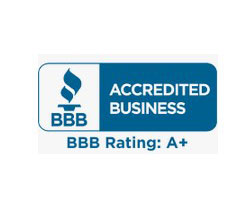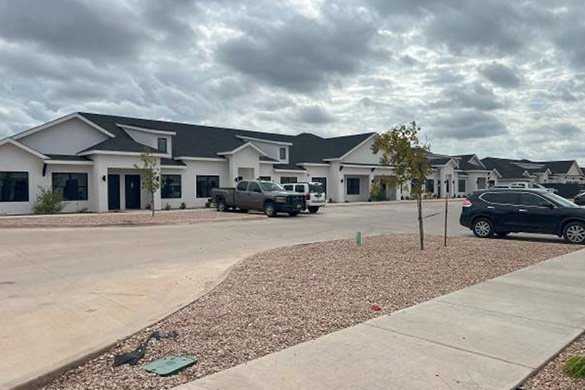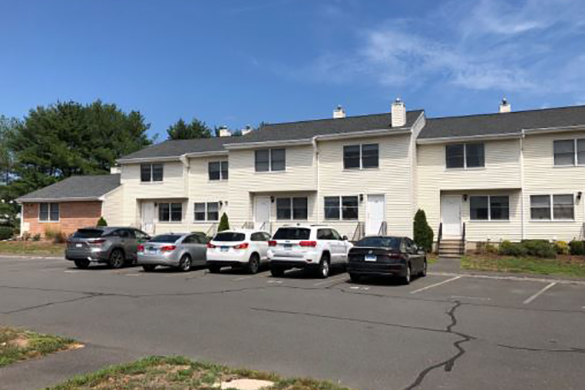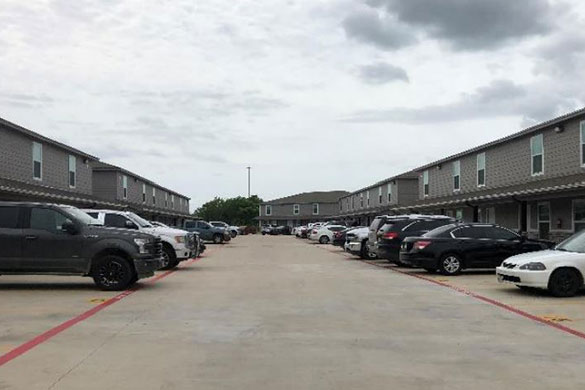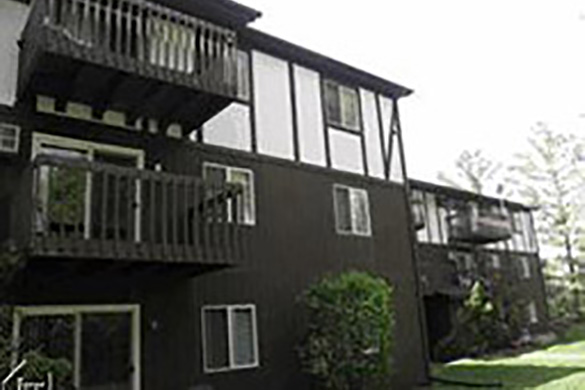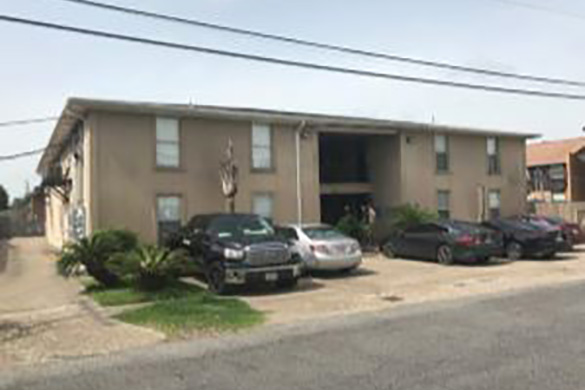Minneapolis Apartment Loans in 2025
At Select Commercial, we specialize in Minneapolis apartment loan solutions for local investors, as well as apartment building financing for larger properties and portfolio needs. Our team of experienced apartment lenders is dedicated to offering competitive rates and tailored programs for apartment investments in the area.
If you are looking for apartment loans outside Minneapolis but within Minnesota, please visit our Minnesota Apartment Loan page. For larger properties, we also offer Minnesota Multifamily Loans over $6,000,000.
For comprehensive rates on all loan products available across the 48 states, visit our commercial mortgage rates page, where we offer competitive rates for loans starting at $1,500,000. Explore our insights below on the 2025 Minneapolis apartment loan market.
| Minneapolis Apartment Loan Rates Under $6 Million | Free Loan Quote | ||
|---|---|---|---|
| Loan Type | Rate* | Max LTV | |
| Apartment 5 Yr Fixed | 5.70% | Up to 80% | |
| Apartment 7 Yr Fixed | 5.78% | Up to 80% | |
| Apartment 10 Yr Fixed | 5.88% | Up to 80% | |
Rates shown apply to typical apartment loan requests under $6 million. Investors seeking apartment building financing or an apartment building loan for a purchase or refinance can speak with our apartment lenders for current program details.
Looking for a larger loan? We also offer Minnesota multifamily loan programs for properties over $6 million
.Minneapolis Apartment Loan Benefits
Minneapolis Apartment Loan rates start as low as 5.24% (as of December 14th, 2025)
• A commercial mortgage broker with over 30 years of lending experience
• No upfront application or processing fees
• Simplified application process
• Up to 80% LTV on apartment financing
• Terms and amortizations up to 30 years
• Apartment loans for purchase and refinance, including cash-out
• 24 hour written pre-approvals with no cost and no obligation
Our Reviews
2025 Minneapolis Multifamily Loan Market: Resilient Demand Amid Construction Slowdown

Construction Tapers Off as Minneapolis Multifamily Loan Market Stabilizes
After a wave of new apartment deliveries in recent years, the Minneapolis multifamily loan market is transitioning into a period of stabilization. Construction activity is forecast to slow significantly in 2025, following the addition of 5,000 units in 2024. Submarkets such as North Loop and Northeast Minneapolis, which experienced a surge in development, will see decreased pipeline activity going forward. This deceleration is expected to ease pressure on vacancy rates and improve operating performance for existing assets across the metro.
Minneapolis Multifamily Loan Market Supported by Rent Growth
Despite the supply influx, effective rent growth in the Minneapolis metro has remained positive, reflecting underlying demand from young professionals and downsizing baby boomers. The average effective rent is expected to climb to $1,420 in 2025, supported by rising occupancy and minimal new competition. Areas with strong connectivity, such as Uptown and St. Louis Park, continue to attract renters due to lifestyle appeal and proximity to employment hubs. Investors targeting Class B and C properties are poised to benefit from tighter conditions and increasing cash flow potential in the Minneapolis multifamily loan space.

2025 Minneapolis Multifamily Loan Market Forecast
- Employment Growth: Hiring activity is projected to grow 0.8% in 2025, reinforcing demand for rental housing in urban and suburban areas.
- Construction Slowdown: Completions will fall by more than 50% from 2024, with fewer than 2,500 new units entering the market.
- Vacancy Rate Improvement: The vacancy rate is expected to decline to 6.0%, driven by reduced supply and steady leasing.
- Rent Growth: Effective rents are forecast to reach $1,420 per month, continuing a multi-year upward trend.
- Investor Outlook: Submarkets with strong access to transit and amenities remain top targets for capital seeking stable returns.
Minneapolis Multifamily Loan Market: 2025 Outlook
The Minneapolis multifamily loan market enters 2025 with positive momentum. With fewer completions on the horizon and a steady influx of renters, the metro’s fundamentals are set to strengthen. Investors stand to benefit from elevated occupancy, rising rents, and strategic opportunities in both core and value-add segments.
What’s going on with Minneapolis apartment loan rates in early 2025?
The Federal Reserve’s Federal Open Market Committee cut the federal funds rate by 50 basis points at its September 2024 meeting, and then followed with additional quarter-point cuts in November and December 2024. These were the first rate cuts since the emergency moves in 2020, and they marked a shift away from the aggressive rate hikes that began in 2022 to fight high inflation. :contentReference[oaicite:0]{index=0} The Fed signaled that inflation had moved closer to its 2% goal and that the bigger risk going into 2025 was a weakening job market, not runaway inflation. :contentReference[oaicite:1]{index=1}
In early 2025, the Fed indicated that further cuts could still happen, but at a slower pace, and suggested that only a limited number of additional cuts may come this year. :contentReference[oaicite:2]{index=2} Lower short-term rates can help overall borrowing conditions and improve investor appetite for income-producing real estate, including apartments. This environment may benefit apartment loan customers and buyers looking for apartment building financing, but there is an important detail to understand: Fed cuts directly affect short-term rates, not long-term rates.
The Prime Rate, which moves with short-term policy changes, dropped from 8.50% in 2023 to 8.00% in September 2024, then to 7.75% in November 2024, and 7.50% by December 19, 2024. :contentReference[oaicite:3]{index=3} Most apartment loan rates in Minneapolis are not priced off Prime, though. They are usually tied to longer-term Treasury yields such as the 5 year, 7 year, or 10 year. Even after the Fed started cutting short-term rates, those longer-term Treasury yields moved higher because investors were still concerned about future inflation and federal borrowing needs. :contentReference[oaicite:4]{index=4}
As of December 14, 2025, the 5 year Treasury is at 3.735% and the 10 year Treasury is at 4.182%. These Treasury yields are a major driver of pricing for an apartment building loan and for programs offered by commercial apartment lenders to purchase or refinance an apartment property.
Everything You Need to Know About Minneapolis Apartment Loan Rates in 2025
In order to determine Minneapolis apartment loan rates, the first thing an apartment loan lender needs to know is the type of property involved. Pricing on apartment loans will usually be lower than pricing for certain other commercial property types, as apartments remain a preferred investment in today's market. After the lender understands the asset class, they will look at the deal metrics, which include Loan to Value ratio (LTV), Debt Service Coverage Ratio (DSCR), and Debt Yield. Loans with a lower LTV and higher DSCR are considered less risky and will have better pricing. Another important deciding factor will be the location of the property. Top quality urban and suburban markets will be preferred over rural locations. One other major deciding factor will be the borrower's experience, credit, net worth, and liquidity. Strong borrowers with experience can expect the best pricing. The bottom line is that apartment lenders need to understand the entire picture before quoting rates. As of December 14, 2025, you can check where apartment loan rates currently start, including options for apartment building financing and refinance.
Minneapolis apartment loan rates fluctuate based on current market indices. Most apartment loans and apartment building loan programs are priced over one of the following: the US Treasury rate, the Wall Street Journal Prime Rate, or the Secured Overnight Financing Rate (SOFR). In early 2025, all of these rates are still elevated as a result of the Federal Reserve's actions to curb inflation. As market rates gradually soften, apartment loan rates should trend downward. Many borrowers today are not locking in long term fixed rates, but are opting for shorter term structures and lighter prepayment penalties so that they can refinance when rates are more favorable.
It used to be fairly common to obtain 80% financing when rates were in the 3% and 4% range, as the property's cash flow could support higher levels of debt. In early 2025, with many rates in the 6% and 7% range, cash flow is more restricted due to higher debt service costs. We often see maximum loan to value ratios in the 65% to 70% range today as a result of these higher rates. As market rates ease, we would expect to see higher loan to value ratios and lower down payment requirements for apartment building financing.
Many borrowers who are looking to refinance loans taken out five to ten years ago are experiencing several obstacles. First, since rates in early 2025 are higher, many loans are coming up cash short (the new loan amount is not enough to pay off the maturing loan). These borrowers are often required to inject more cash into their deals or take on equity partners who are willing to invest. Today's higher rates are causing mortgage payments that are sometimes rising faster than rental income can support. Until rates ease, many borrowers will experience difficulty refinancing their existing apartment building loan. Once rates soften, refinancing may become more attractive.
There are many reasons to work with a qualified and experienced Minneapolis apartment loan broker. A mortgage broker will have a large database of capital sources, including agency lenders, insurance companies, CMBS lenders, national, regional and local banks, credit unions, debt funds, and private lenders to choose from. The broker will analyze your specific deal and determine which capital source is most likely to offer the best apartment building financing terms at the highest likelihood of approval. The broker will professionally package your deal and negotiate the best structure for you.
Select Commercial has over 40 years of experience negotiating commercial and apartment loans for its clients. They have an extensive nationwide network of capital sources that are able to consider most loan scenarios. Many borrowers go to one or two of their local banks, but don't have the nationwide reach to approach other apartment lenders that are often offering better rates and terms. Select Commercial spends the time understanding every client's needs and will aim to negotiate all important loan terms, including rate, term, amortization, prepayment penalty, recourse obligations, fees, and reporting requirements.
Lenders look at many items when deciding whether to approve an apartment loan or an apartment building loan. Some of the most important factors include LTV ratio, DSCR ratio, location of the property, property condition, occupancy, and borrower qualifications (experience, credit, net worth, and cash liquidity). While most of these factors are common sense and assumed by borrowers, the DSCR ratio might need some explanation. DSCR stands for Debt Service Coverage Ratio and is a ratio of the total net operating income divided by the annual debt service. Most lenders will require a DSCR of at least 1.25. This means that for every dollar of mortgage payment, the property must net $1.25 in NOI. While the maximum LTV might be 80%, the property still needs to meet the debt service requirements. Due to higher market rates in 2025, many properties will only cash flow at 65% or 70%. It is important to calculate both LTV and DSCR when looking for a new apartment loan.
Minneapolis lenders look for quality properties with high historical occupancy in excellent neighborhoods. Certain asset classes are preferred today based on current market conditions. Apartment properties and investment grade retail, warehouse, and industrial properties with long leases are always in high demand. The risk of default with these properties is typically lower. Riskier deals include properties with short term leases, properties with high vacancy rates, and properties in remote or rural locations. Certain asset classes are not in favor today, such as general office properties. Ever since the work from home policies enacted during the Covid period (many of which still remain in place) office properties have lagged the market.
Most new loans today will have rates that are higher than the rates many borrowers obtained five to ten years ago. As these loans come up for renewal, some borrowers will be forced to refinance at today's higher rates. Those borrowers might find that the new loan does not cash flow as well as their previous loan and might need to pay down the balance. Some borrowers who refinance now are doing so to free up cash for other investments. Borrowers will need to decide if that makes sense in today's market. We are not seeing a lot of purely discretionary refinancing right now due to higher market rates. Once rates soften, we expect to see more borrowers refinance their apartment building loan to improve terms or pull equity for upgrades.
Applying for a Minneapolis HUD apartment loan is similar to applying for a regular commercial loan with your bank. The lender will want to see a current rent roll showing at least 90% occupancy, a 12 month operating history showing the necessary cash flow to support the new loan, sufficient apartment experience, good net worth and cash liquidity, and a strong credit profile. Loans that do not meet HUD, Fannie Mae, or Freddie Mac standards might still qualify for a bank or credit union loan. The lender will tell you up front which lending options are best for you.
Applying for a Minneapolis Freddie Mac apartment loan is similar to applying for a regular loan with your bank. The lender will want to see a current rent roll showing at least 90% occupancy, a 12 month operating history showing the necessary cash flow to support the new loan, sufficient apartment ownership experience, good net worth and cash liquidity, and a good credit rating. Loans that do not meet HUD, Fannie Mae, or Freddie Mac standards might still qualify for a bank or credit union solution. Your lender will present the best fit.
Applying for a Minneapolis Fannie Mae apartment loan works much like any other application for apartment building financing. The lender will review a current rent roll showing at least 90% occupancy, a 12 month operating history, cash flow that can support the proposed debt service, borrower experience, net worth, liquidity, and credit standing. If the loan does not meet Fannie Mae, Freddie Mac, or HUD standards, you may still qualify with a bank, credit union, or private apartment lender.
Most apartment loans today are fixed for 5, 7, or 10 years and come with a 25 to 30 year amortization schedule. Loans can be recourse (personal guarantee) or non recourse (no personal guarantee). Apartment building loan programs typically carry some form of prepayment penalty, whereas many residential home loans do not. Specific terms will be determined by your lender's underwriting team after your application is reviewed.
Minneapolis apartment loan lenders typically lend up to 75% to 80% on an apartment purchase (down payment of 20% to 25% necessary). On other types of commercial property, apartment lenders will typically lend up to 70% to 75% (down payment of 25% to 30% necessary). An exception is for owner occupied business real estate, where an owner/user may qualify for up to 90% LTV financing.
Minneapolis apartment loans are evaluated differently from residential loans. Residential lenders base their decisions on the borrower's income and creditworthiness, while commercial apartment lenders focus on the property's cash flow, operating statements, rent roll, and other financial metrics. Higher perceived risk in certain commercial properties can lead to higher rates. Strong, well performing properties with consistent income can qualify for better pricing and more attractive apartment building financing terms.
The best commercial properties to invest in 2025 are those with high historical occupancy in strong locations. Apartment properties and investment grade retail, warehouse, and industrial properties with long leases are preferred due to their lower risk profile. Riskier properties include those with short term leases, high vacancy rates, or locations in rural areas. General office properties remain less desirable due to work from home trends in many markets.
Refinancing an apartment loan or apartment building loan involves determining whether the new terms meet your goals, such as lowering rates, reducing payments, or freeing up cash. Higher rates in 2025 can make refinancing challenging, with some borrowers needing to inject additional cash. Once rates soften, refinancing may become more favorable for many property owners, especially those planning renovations or other value add improvements.
To apply for an apartment loan, you will need to provide financial documentation, including a rent roll, operating statements, and borrower financials (net worth, liquidity, and credit score). The lender evaluates both the property profile and the borrower profile to determine loan eligibility and pricing. A qualified mortgage broker can help position your request with the right apartment lenders and identify the best apartment building financing options for your situation.
Latest Expert Insights from Stephen A. Sobin
Stephen A. Sobin, the president of Select Commercial Funding LLC, is a renowned expert in the field of multifamily financing. His insights and perspectives are regularly sought by leading industry publications. Here are his latest contributions that highlight his deep understanding of the multifamily financing landscape and his commitment to providing clear, insightful analysis on key industry issues.
Navigating Opportunity, Risk as 2025 Winds Down
In an article for Commercial Property Executive titled "Navigating Opportunity, Risk as 2025 Winds Down", Sobin explains as we head into the final stretch of 2025, the commercial real estate industry stands at a pivotal moment. After several years of upheaval—from pandemic disruptions to aggressive Federal Reserve rate hikes and lasting shifts in how people live and work—the sector is entering a new phase.
Why Lower Rates Haven't Fixed Commercial Real Estate
In an article for Wealth Management titled "Why Lower Rates Haven't Fixed Commercial Real Estate", Sobin explains that even as the Federal Reserve has begun cutting rates and borrowing costs should be falling, the commercial real estate sector remains locked in a frustrating stalemate. For high-net-worth investors trying to time the market, he emphasizes that understanding this disconnect requires looking beyond the headlines.
Why the Fed Rate Cut’s a Game Changer for CRE
In an article featured in Multi-Housing News, Stephen Sobin highlighted that after months of speculation and market anticipation, the Federal Reserve finally pulled the trigger last week, cutting the federal funds rate by 25 basis points to 4.00 to 4.25 percent. read the full article.
Inflation's Current Impact on Apartment
In an article featured in Multi-Housing News, Sobin explains how commercial mortgage rates continue to challenge investors, with elevated inflation depressing real estate market activity. Read the full article.
Will the July Jobs Report Pressure the Fed to Act?
Sobin noted in Multi-Housing News that unemployment hit a three-year high and job creation slowed significantly, factors that could push the Fed to reconsider future rate hikes. Read the full article.
Persistent Inflation and Its Effects on CRE
In an article featured in Multi-Housing News, Stephen Sobin highlighted that while inflation is still a challenge for the Federal Reserve, there are many positive signs for the commercial real estate industry. The headline Consumer Price Index rose 3.2 percent for the year ended Feb. 29, a figure 20 basis points lower than the Dec. 31, 2023, rate. read the full article.
Commercial Spotlight: Mid-Atlantic Region In this four-state powerhouse, smaller metros are thriving.
In a feature in Scotsman Guide, the Mid-Atlantic Region's real estate dynamics are explored, highlighting its resilience and growth amidst the pandemic.
Stephen Sobin of Select Commercial Funding LLC shared insights on the New York market's allure and the challenges buyers face. He noted the shift from primary urban areas to tertiary markets due to evolving preferences and financial conditions. For a deeper dive into Sobin's analysis, read the full article.
What the New Jobs Report Means for CRE
In an article titled "What the New Jobs Report Means for CRE" in Commercial Property Executive, Stephen Sobin shared his perspective on the latest jobs report and its implications for the Commercial Real Estate (CRE) sector. He highlighted the challenges posed by high interest rates and the prevailing uncertainty in the market. Sobin remarked, "Sellers aren’t selling, buyers aren’t buying... Everyone is waiting because no one knows what to expect." For a detailed analysis and more of Sobin's insights, read the full article.
Decoding "Junk Fees" in Rental Housing
In another latest contribution to Multi-Housing News, Sobin provided expert commentary in an article titled "What's Next for Junk Fees? The Industry Weighs In". He clarified the difference between legitimate fees collected for various third-party services and so-called "junk fees". Sobin emphasized the importance of borrowers understanding their rights in negotiating all loan terms and the obligation of lenders to disclose all fees.
Understanding the Impact of Federal Reserve's Decisions
In a recent article titled "How the Fed's Pause on Interest Rates Impacts Multifamily" published by Multi-Housing News, Sobin shared his expert insights on the Federal Reserve's decision to pause interest rate hikes. He accurately predicted that the Fed would not raise rates in June, citing recent bank failures and lingering concerns about a potential recession.
Stay tuned for more expert insights from Stephen A. Sobin on the evolving multifamily financing landscape.
Apartment Loan Types We Serve
If you are looking to purchase or refinance a Minneapolis apartment building, don't hesitate to contact us. We arrange financing in Minneapolis for the following:
- Large urban high-rise apartment buildings
- Suburban garden apartmentcomplexes
- Small apartment buildings containing 5+ units
- Underlying cooperative apartment building loans
- Portfolios of small apartment properties and/or single-family rental properties
- Other multi-family and mixed-use properties
Apartment Loan Helpful Articles
How to Get the Best Rate on a Apartment LoanHow to Buy an Apartment Building
Uncomplicated Underwriting
How to Invest in an Apartment Building
Are You Shopping for an Apartment Building Loan?
How To Get The Best Rates On An Apartment Refinance
Recent Apartment Loan Closings
Whether you are purchasing or refinancing, we have the right solutions available for your apartment mortgage loans. We will entertain apartment loan requests of all sizes, beginning at $1,500,000. Get started with a Free Commercial Mortgage Loan Quote.
Minneapolis Apartment Loans
Select Commercial provides apartment loans throughout Minneapolis, Minnesota including, but not limited to, the areas below. We provide apartment loans in most major cities throughout the United States.

